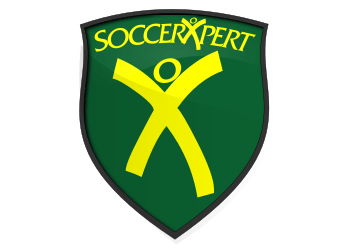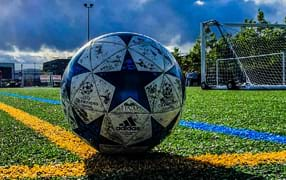Soccer Team Management: Part 1 Practice Management
This tip will assist coaches to organize a soccer practice based on the age of the players, and answere many important soccer management related questions.

Soccer Team Management, Team management, soccer management, soccer coaching, coaching soccer
This tip will assist coaches to organize a soccer practice based on the age of the players, and answere many important soccer management related questions.
This is the beginning of a three part series on Soccer Team Management. Part 1 is specifically covering practices and the coach’s responsibilities in managing practices.
One of the coach’s primary responsibilities is coordinating and organizing training sessions. With this responsibility come many questions that I plan on answering in this series such as:
- Where should I practice?
- How often should I practice?
- How long should I practice?
- What type of equipment should I have for practice?
- How should I structure my practice?
- What should I focus my practices on?
- What drills should I run at practice?
- How do I challenge the kids but still have fun?
We have a lot to cover, so let’s get right to it.
Where Should I practice?
Many youth soccer associations in the US will assign your team practice fields which are reserved by the association or they will give you a list of designated training areas. If your association does not have fields designated for practice use, you might check out local public schools, churches or parks. The size of the field and whether or not you require a goal will be determined by the age of your players. Under 5 through under 8 soccer players require a very small area would not benefit by shooting on a full size soccer goal. However, an under 14 or under 16 team would need a much larger field (at least ½ field) and would benefit greatly by having a full size goal for training purposes. As the coach, it is up to you to determine the best location based on your player’s age. Be sure you examine the fields playing condition prior to calling a practice. Rough terrain or sticker burrs do not make for a pleasant practice.
How often should I practice?
This question is again determined by the player’s age and maturity. Younger players from Under 5 to under 7 should practice 1 time a week. Players Under 8 and up should practice 2 times a week. It’s best to stagger the number of practices with a day or two to recover from rigorous training sessions. Try to stagger the practices such as Monday and Wednesday, or Tuesday and Thursday. These give you the best rest between weekend games and weekday practices.
How long should I practice?
This question is also answered by the player’s age. The younger the player, the less amount of time they should spend at practice. For under 4 and under 5 players, often 45 minutes to an hour is ample time. As I have learned from personal experience you probably will not want to go longer than that. For the Under 6 and Under 8 player you should practice anywhere from one hour to an hour and a half depending on your players. At under 10 to under 12, the average practice should be one and a half hours and can be extended up to 2 hours on occasions, but the players can productively practice for an hour and a half. For players under 14 and older, a 2 hour practice is acceptable. Again, these time frames are general time frames and should be determined by the age, mentality, and competitiveness of your players.
What type of equipment should I have for practice?
The coach should always be prepared when attending practice as he should always have the proper equipment. This list of equipment should include: disc cones, tall cones, alternate jerseys (3 colors), extra balls, ball pump, corner flags, and small fold away goals.
How should I structure my practice?
You should organize the practice as to have a warm-up, a teaching progression, a game-like condition and a cool-down. When warming up, a longer warm-up should be emphasized on older soccer players. Always attempt to organize the warm-up around the teaching of the day and warm-up with a related topic. For instance, if you are focusing on taking on players, a related warm-up could be a topic related to dribbling. Next, Come up with a teaching progression that is from simple to complex. Sticking with the same topic of taking on opponents, we would start out in a 1v1 situation before introducing the 4v4 side of this topic. Next, you will want to have a “Game-like” condition where the players are somewhat unrestricted and the kids play the game. The coach can step in and set expectations, however, this is a time to let the kids play. Last, the players should have a cool-down. This part is often overlooked; however, it is crucial for injury prevention.
When coaching, take advantage of teachable moments, express praise and not the negative, minimize the interruptions and let the kids play, maximize the amount of touches on the ball, and minimize the lines.
What should I focus my practices on?
As a coach, you should determine the age, ability, size, fitness, etc of your players, evaluate their weaknesses and plan an appropriate practice based on those weaknesses. Take items that went wrong in previous games and make that your practice topics.
What drills should I run at practice?
Soccer drills are an important part of soccer practices. A coach should always have a resource available to get ideas for new, fresh soccer drills. Variety is the key to keeping a team interested and excited in playing soccer. Players don’t want to see the same drill day in and day out and they will become bored with the drills. There are many online resources such as SoccerXpert.com which provide a variety of drills and ideas to fit your age level.
As explained in an earlier question, make sure your drills are keeping topic with what you are teaching.
How do I challenge the kids but still have fun?
The coach should again look at the age and level of the team. If you are teaching under 4-under 8 players, the expectation level is low, however, you should always attempt to encourage the players to give more than they are currently. For the under 10-under 12 player, the physical aspects of the training sessions should be greatly increased as the players will respond better to higher pressure. The high pressure on this age range should also be mixed with some fun in order to maintain their liking for the game. For under 14 and older, the players should be able to be pushed the hardest at this age. With the increased expectation level, higher demanding drills and an active coach, the training sessions for this level can be intense. It’s up to the coach to know their team and their limitations as to how far a team can be pushed. Make sure you mix hard work with good ole fun every once in a while to keep the players attention.
In conclusion of this part, here are some things a coach can do to run a more successful training session. The top two things for the coach to do are to set CLEAR expectations and teach respect for the game. The players should always know what is expected of them. The coach should always demand that your team pays attention and players as well as the coach should always look the part. The coach should always project their voice and use dialogue that is appropriate to the age group of their team. The coach must also be able to demonstrate moves, techniques or other teachable moments, or pick someone who can to demonstrate. The coach must also explain quickly and clearly what they want to convey.


